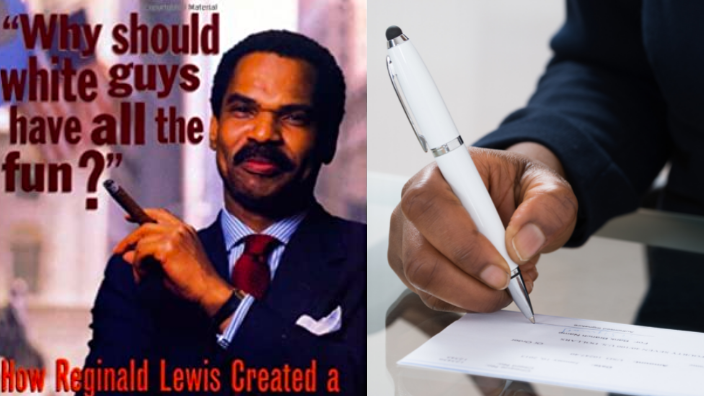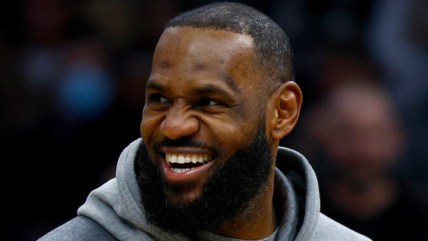Giving Gap, in the spirit of Reginald F. Lewis, aims to improve philanthropy for Black nonprofits
EXCLUSIVE: "The work that we're doing, and its connection to his legacy, is ensuring that the power belongs with Black communities and Black-founded nonprofits," said Aisha Alexander-Young, CEO of Giving Gap.

Reginald F. Lewis became the first Black American to build a billion-dollar company and rose to prominence with his autobiography, Why Should White Guys Have All the Fun. His legacy of entrepreneurship, philanthropy and integrity lives through the Giving Gap organization.
Lewis’ daughter, Christina Lewis, co-founded Giving Gap in 2020 after the murder of George Floyd sparked public debate over how racial and economic disparities persisted in the United States. Giving Gap emerged as an organization that would amplify Black nonprofits addressing socio-economic inequities and connect the groups with donors online.
“I think people read Why Should White Guys Have All the Fun because it’s about a Black person, but who sustained great financial independence,” Lewis told theGrio. “That’s what we need to ultimately close the wealth gap.”
Aisha Alexander-Young, CEO of Giving Gap, contends that if the question posed by Lewis in his book title were applied to the racial economic issues of today, the question would evolve to ask, “why should white guys have all the power?”
“The work that we’re doing, and its connection to his legacy, is ensuring that the power belongs with Black communities and Black-founded nonprofits that are building power in Black communities,” Alexander-Young said.

The figures Giving Gap is challenging demonstrate that there are many ways in which Black-led nonprofits are in need of finding. According to the organization, the average revenue for Black-led early-stage nonprofits compared to white-led nonprofits is 24% lower. In comparison to white-led nonprofits, Black-led early-stage nonprofits have access to 76% less unrestricted net assets. Even programs geared toward helping Black men and boys have a racial funding gap that shows Black-led groups lagging in revenue by 45 percent.
“I believe that these people who’ve chosen to do nonprofit work now and work directly in the community, helping people really deserve to be supported,” Lewis highlighted. “Too often, they’re working on threadbare budgets, spending their own money on supplies, because they care so much about this issue.”
Online potential donors can log onto Giving Gap’s website and select a specific area where they’d like to bridge the financial gap of philanthropy. For instance, if you are passionate about housing or food insecurity, Giving Gap identifies which organizations are addressing those disparities.
Throughout Reginald F. Lewis’ career, he acquired companies and invested in their growth. Similarly, Giving Gap provides donors an opportunity to invest in the growth of nonprofits that are providing services to Black communities in hopes of spurring sustainable economic stability.
“We see that investments in Black-founded nonprofits are always connected in trauma, and then they go away. And it’s this kind of cyclical trauma, investment, and then lack of investment after the attention on that trauma dies down,” Alexander-Young explained to theGrio. “We fundamentally believe that that shift in culture should be that Black-founded nonprofits are important. Their work is important. It should be supported all the time, and not just connected to times of trauma.”
“Maybe some of those traumas wouldn’t exist if we funded Black founded nonprofits fully all the time,” Alexander-Young added.

To date, Giving Gap has more than 800 nonprofit organizations on their list and averages 20 submissions to add onto the list per day. Nonprofits can reach out to Giving Gap to be added to the list by going to their website and selecting at the top of the page “submit a nonprofit.”
In addition to raising awareness of Black nonprofits, Giving Gap exemplifies an emerging practice in philanthropy that has taken off since 2020 — ethical investing. What you spend money on, who you financially invest in and what causes you decide to fund say something about who you are as a person and what you believe.
The concept of Giving Gap speaks to this shift occurring in philanthropic circles that it’s now a standard practice to put your money where your mouth is in a sense.
Even donor engagement makes a statement. Alexander-Young explained to theGrio that regardless of if Giving Gap achieved its goal of helping Black nonprofits access $1 billion in donations, she’d still want to activate one million donors in reach.
“Ultimately, this is about shifting the culture of philanthropy, and shifting the culture and mindset of people who are giving to organizations,” Alexander-Young emphasized. “We want to see, as many people participate in what is ultimately a movement to realize the value and importance of Black founded-nonprofits and supporting their work.”
TheGrio is now on your TV via Apple TV, Amazon Fire, Roku, and Android TV. Also, please download theGrio mobile apps today!”


